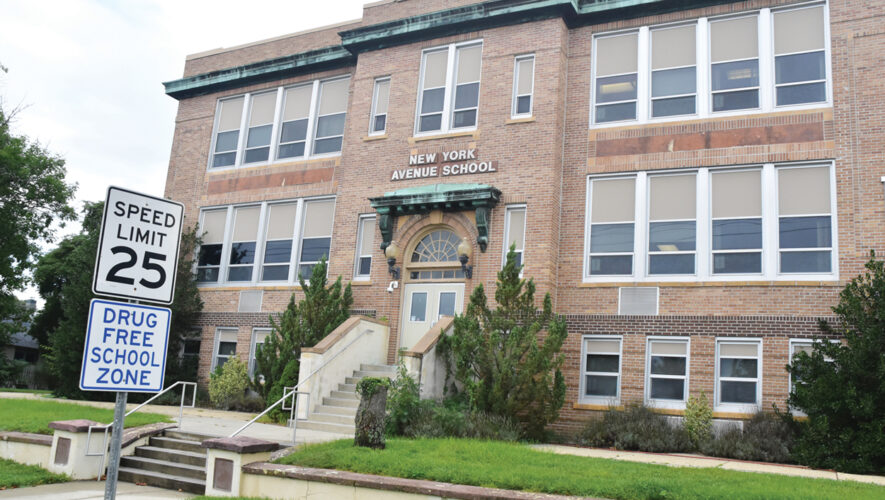Army Corps’ NJ coastal proposal includes a storm surge barrier across Great Egg inlet, bay barrier off south end
By DAVID NAHAN/Sentinel staff
TRENTON – Last week, the U.S. Army Corps of Engineers and New Jersey Department of Environmental Protection released a $16 billion flood mitigation proposal to protect the Jersey shore that includes storm surge barriers – one that would go across the Great Egg Harbor Inlet between Ocean City and Longport.
Similar storm surge barriers would be constructed across the Manasquan Inlet and Barnegat Inlet.
The sprawling proposal, with a variety of items to reduce storm and flood damage, stretches from Neptune all the way to Cape May. In all it covers 950 square miles of coastal area in Cape May, Atlantic, Ocean, Burlington and Monmouth counties.
The plan also includes cross-bay barriers in the south end of Ocean City and along Absecon Boulevard.
The more than 500-page report, dated Aug. 21 and called the New Jersey Back Bays Study (NJBB), also calls for elevation and flood proofing of 18,000 structures, including northern Atlantic County on the mainland shoreline and on Brigantine “and in large portions of Cape May County.” Nearly half of the structures that need to be raised are in Cape May County (8,579); about 1,500 are in Atlantic County. The rest are in Ocean County (8,567), Monmouth County (135) and Burlington County (66).
According to diagrams in the report, that would include almost all of Cape Island and all the properties in Cape May County east of the Garden State Parkway as well as properties just to the west of the parkway, going farther inland the farther south in the county.
Work that could be added to the plan includes buying out property owners in flood-prone areas and enhancing marshes by creating living shorelines.
The Army Corps began working on the project with the NJDEP after the devastation caused by Hurricane Sandy in October 2012. The objective, according to the report, is to reduce damage from coastal storm-related flooding. It cites damage to property, infrastructure, ecosystems and populations.
If nothing is done, the coastal area could experience $1.8 billion in annual flood damage, according to the report.
Announcing the report, the officials also looked at the New Jersey 2020 Scientific Report on Climate Change, which shows precipitation is expected to increase between 7 and 11 percent within 30 years and a 50 percent chance that sea level rise will meet or exceed 1.4 feet. With a lesser (17 percent) chance sea level will rise 2.1 feet, there would be more coastal flooding during sunny days and storms. Sea level is expected to rise as much as 6 feet by the turn of the next century.
Storm surge barriers
According to the report, “storm surge barriers (SSB) reduce risk to back bay environments and estuaries against storm surge, flooding and waves. In most cases the SSB consists of a series of movable gates that stay open under normal conditions to allow navigation and tidal flow to pass but are closed during storm surge events. Storm surge barriers are often chosen as a preferred alternative during storm surge events and reduce the required length of flood protection management measures behind the barriers.

“Storm surge barriers range in scale from small/local gates reducing risk to a small coastal inlet to very large barrier ‘systems’ reducing risk to a large estuary or bay and consist of a series of coastal dikes and gates,” according to the report.
This one across Great Egg Harbor Inlet would have a gate 320 feet wide in the deepest part of the inlet to allow for boat traffic and would close only to provide protection during storms.
Cross-bay barriers
The report explains cross-bay barriers are “essentially the same” as the storm surge barriers across an inlet but cut across the interior of a bay. Their length and features also differ.
Cross-bay barriers can be built adjacent to roads, bridges and causeways and would have flow gates to allow for regular tidal flow under normal conditions.
The one proposed for the south end of Ocean City would stretch across the back bay from the edge of the island around 52nd Street slightly northwest all the way to the Garden State Parkway. A sector gate that is 120 feet wide would be placed across the path of the Intracoastal Waterway to allow boat traffic. Parts of the barrier would function like a levee and in other parts are barriers with box culverts. An additional “perimeter plan” runs across the western edge of the island from at the beginning of the barrier the very southern tip of the residential areas on the island. (See diagram.)

Graphics in the U.S. Army Corps of Engineers proposal show the location of a proposed cross-bay barrier extending from 52nd Street in Ocean City northwest to the Garden State Parkway.

“To better protect New Jersey’s residents, communities and economy, we must plan and prepare today for the climate change risks of tomorrow,” NJDEP Commissioner Shawn M. LaTourette said at the release of the report. “The Back Bays study integrates years of research and presents options for protecting areas of the Jersey shore from severe storms and flooding — risks that threaten New Jersey today and that will worsen as our planet warms.”
LaTourette said Gov. Phil Murphy’s administration is “committed to engaging all New Jersey communities. We must seek and hear all voices as the Back Bay Study and other climate resilience plans take shape.”
“The potential solutions to back bay flooding are complex, but there is a clear need to consider and evaluate all options and that’s what the New Jersey Back Bays Study aims to do,” said Philadelphia District Commander Lt. Col. Ramon Brigantti of the Army Corps of Engineers. He, too, said they will continue the dialogue in the coming months.
To that end, the Army Corps will host virtual public meetings to discuss the report and answer questions 6 to 7:30 p.m. Sept. 20 and 1 to 2:30 p.m. Sept. 21. Webinar details and instructions can be found on the study webpage at:
https://www.nap.usace.army.mil/Missions/Civil-Works/New-Jersey-Back-Bays-Study/


